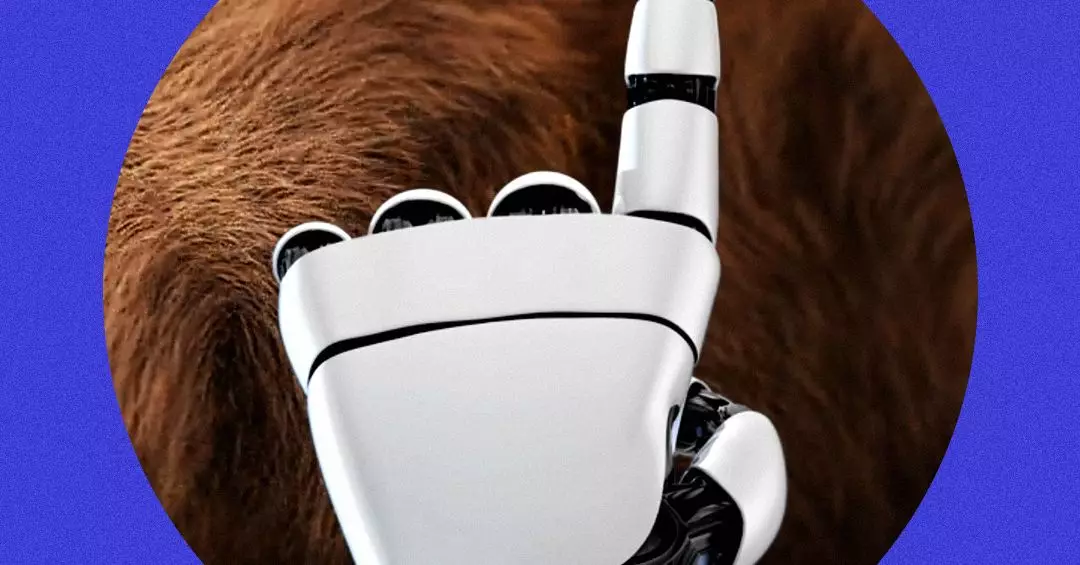In an era of rapid technological advancement, Amazon has unveiled a groundbreaking robot named Vulcan, designed specifically to enhance the e-commerce giant’s efficiency in warehousing and logistics. This latest initiative signifies a major leap forward in the application of robotics, focusing not solely on the brute strength of machines but on their ability to interact delicately with their environment. By incorporating a sense of touch, Vulcan demonstrates potential that could redefine how warehouses operate in the near future.
The role of robots in warehouse settings has predominantly revolved around transporting items, yet Vulcan introduces a nuanced layer of interaction, allowing for rummaging through shelves to locate products quickly. According to Aaron Parness, Amazon’s director of robotics AI, this element of touch is crucial for effectively navigating a space filled with various items. By mimicking the dexterity of human hands, this robotic innovation can alleviate the more physically taxing responsibilities currently shouldered by human workers.
The Mechanics Behind Vulcan
At the heart of Vulcan’s operation lies a conventional robotic arm equipped with specialized appendages—a spatula-like tool for sifting through inventory and a suction mechanism for securely grasping items. This means Vulcan isn’t just a metal arm; it’s an engineered extension of human capability, designed to manipulate and interact with items on shelves in a way that previous models could not achieve. Sensors integrated within the robot’s joints provide essential feedback, enabling it to comprehend the existence and shape of nearby products. This level of tactile feedback is vital for performance in tasks where precision and care are necessary.
Moreover, machine learning plays a pivotal role in Vulcan’s performance. As it encounters various objects and conditions, the robot refines its algorithms to enhance its understanding and interaction with items. Parness refers to this capability as “special sauce,” emphasizing how the interpretation of sensory data translates into actionable insights that enhance operational efficiency. It’s clear that Vulcan’s success relies heavily on the sophistication of its programming, making it not merely a physical entity but a smart system capable of evolving through experience.
A Balance Between Automation and Human Labor
The introduction of Vulcan raises significant questions about the future of human labor in Amazon’s fulfillment centers. While the company touts the robot as a solution to back-breaking physical labor, it simultaneously recognizes the irreplaceable value of human workers. Parness has been transparent about the company’s approach to automation, stating that they do not envision a fully automated environment, or “lights out fulfillment.” Instead, Vulcan is designed to complement human efforts, sharing the workload rather than obliterating roles entirely.
A key element of this collaboration includes Vulcan’s adaptive strategies for tasks it cannot handle. When faced with particularly challenging shelving arrangements, the robot is programmed to reassign those items to human workers rather than stubbornly persisting, which both emphasizes the robot’s limitations and underscores the importance of human intuition in the fulfillment process. The dynamic between Vulcan and its human colleagues hints at a future where synergy between man and machine becomes the standard in warehousing practices.
Challenges Ahead
Despite Vulcan’s innovative nature, challenges remain in the realm of robotic touch sensitivity. Ken Goldberg, a roboticist at the University of California, Berkeley, pointed out the impressive progress in tactile sensing technology but also emphasized that robots are still far from achieving the same level of dexterity and sensitivity as human beings. The human sense of touch is intricate and can adapt to countless variables, a trait that remains formidable for robots aspiring to replicate that capability. Goldberg’s remarks serve as a reminder that although Vulcan is a step forward, there is still a significant journey ahead in the evolution of robotic capabilities.
Vulcan may very well signify the beginning of a new chapter in Amazon’s logistics strategy, one where automation complements human effort rather than completely displacing it. The focus on touch-sensitive technology could pave the way for new developments that bridge the gap between human intelligence and mechanical prowess, creating a more effective and efficient future for warehousing and fulfillment. However, the road to truly versatile and sensitive robots remains long and complex, promising both challenges and opportunities in the robotic landscape.

